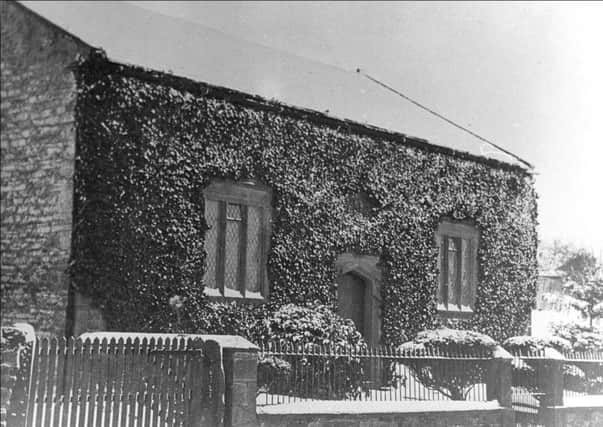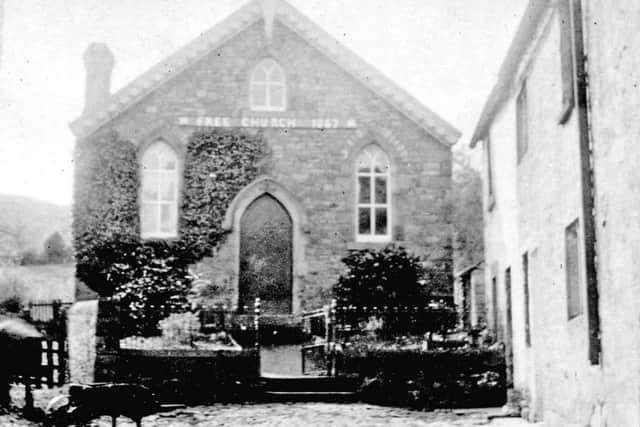Lancaster nostalgia: Methodist Chapel and United Free Church in Wray


This religious history of Methodism is taken from a Lancaster Guardian article dated 1889.
If the Methodists had a cause in Wray when the late Francis and John Smith settled in the neighbourhood it was of small dimensions.
Advertisement
Hide AdAdvertisement
Hide AdBeing the sons of Joseph Smith, an earnest Christian and an old local preacher of the primitive type, they soon made their influence felt for the advancement of Methodism.


Francis Smith converted one of his cottages at the east end of the village into a place of worship. From this small beginning Methodism gained numbers and influence until it was found necessary to make efforts to secure funds for a chapel.
From this small beginning the interest gained strength, and in the course of time a neat and commodious chapel was built at the west end of the village.
In 1928 a plot of land to the west of the chapel was purchased for £50. A large timber hut, which was used as a supper room, was built on this land. This wooden construction was made by Nicholas Newby, a Methodist local preacher, who was a joiner and undertaker at Wennington.
Advertisement
Hide AdAdvertisement
Hide AdHowever, in 1959, when the plot of land was converted into a car park, the supper hut was dismantled and sold to Roeburndale Chapel for £50. The supper hut is in use at Roeburndale Chapel to this day.


Wray Methodist Chapel found the numbers within its younger congregation swelled during the Second World War as the former workhouse at Hornby became a hostel for evacuees.
These youngsters, some only six years old, were brought from the surrounding large towns to avoid the German bombings.
The children, some 60 in number, walked to Wray Methodist Chapel every Sabbath for the Sunday service. After they service they returned to Hornby for lunch.
Advertisement
Hide AdAdvertisement
Hide AdIn the afternoon they walked to Wray once more to attend the Methodist Sunday school.
In the course of a year or two after the vision they joined the United Methodist Free Church and Wray became the head of a new circuit. The circuit included Ingleton, Tatham Foss Bank, Lancaster and some other small villages and hamlets.
After the Lancaster Society gained influence and numbers and opened the new Chapel in Brock Street, Lancaster, Wray had to lower its flag and take the second place in the circuit.
In 1935-36, after just under 70 years, the congregation of the United Free Church rejoined with the Methodist Chapel, situated to the west of the village on Hornby Road.
Advertisement
Hide AdAdvertisement
Hide AdThe United Free Church was then used as a Sunday school for the children of this newly converged joint Methodist Chapel.
In 1952-3 the Sunday school moved to the former Friends’ Meeting House, situated next to the Methodist Chapel, and the United Free Church was sold to Mr Parker Foxcroft, who used the building as his joiner’s workshop.
Although the old church, being warm and relatively spacious, made an excellent workshop, one problem was posed by the church’s small entrance.
The doorway was too low for a joiner’s workshop and there was always a danger that the objects produced would be too large to be removed from the building.
Advertisement
Hide AdAdvertisement
Hide AdOne day the inevitable happened, a door was made that was too large for the entrance. A section had to be removed from the church door and also from the stonework above.
The damage from this incident is still visible today.
Upon Mr Parker Foxcroft’s retirement in 1968 the church was converted into a domestic dwelling.
Many years ago the Primitive Methodists made repeated attempts to establish a cause at Wray.
At one time they held their services in an upper room in the centre of the village. This was not a success so the late Mr Birkby of Morecambe built a small Primitive Methodist chapel on his craggy estate near Wray.
Advertisement
Hide AdAdvertisement
Hide AdAt one time the chapel was supplied with preachers from the Primitive Methodist Settle Mission and subsequently by the Lancaster Primitive Methodists.
It was said that on many a Sunday there would be only one member of the congregation attending this needless chapel apart from the local preacher appointed for the morning service.
This chapel, built in 1870, was taken down after the death of Mr John Birkby and re-erected at Dent.
All that now remains of the old chapel at Botton, which was situated on the south side of the road from above Beck Farm to Crag Hall, is what was once the lavatory for the chapel, according to my dad Stephen Kenyon.